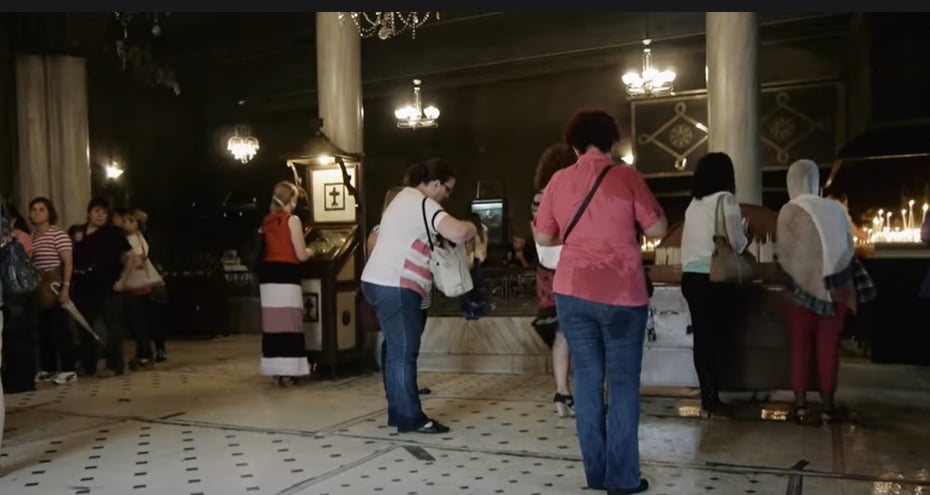
Panagia Vefa is a Greek Orthodox church in Istanbul where, on the first day of each month, people of all faiths go to make a wish.
Hundreds of Istanbul residents and visitors from other places flock to the church in the Vefa neighborhood with the hope that the wish they make there will come true.
The Turks call it Ayın Biri Kilisesi, which means the “Church of the First Day of the Month,” but the church has a long history that goes back to Byzantine times.
It is actually called the Church of the Assumption of the Virgin Mary, and the original church on the site was destroyed during the Fall of Constantinople in 1453.
The church was rebuilt centuries later, and, after receiving the blessing with Holy Water, it was handed over to the Macedonian Educational Brotherhood of Istanbul.
The church suffered great damage during the anti-Greek pogrom in Istanbul in 1955 but was repaired afterward.
It stands across from the Monastery of the Pantokrator. It is called Panagia Vefa because the neighborhood was named after the Sufi “Vefa,” who lived there.
People make wishes at Panagia Vefa
Visitors to the Greek Orthodox church in Istanbul buy trinkets and keys that are sold at the church.
Many of the wishes they make are related to health problems, but they also ask for God’s assistance in finding a mate, money problems, work issues, and a whole host of other problems. Most of the wishes, however, are made by mothers who want a good husband for their daughters.
After getting the trinket or key, the churchgoers light a candle and say their wish before receiving a blessing from the priest, who belongs to the Ecumenical Patriarchate of Constantinople.
The person who sees his or her wish come true must return the key or trinket to the church.
History of the Orthodox church
In Byzantine times, the neighborhood was called “ta Sofrakiou,” but the name later changed to Vefa after the Sufi Sheikh Eb ul Vefa.
According to legend, Constantine Palaiologos, the last Byzantine emperor, is buried in Vefa in a tomb that is “invisible and insignificant,” as Greek historian Constantine Paparrigopoulos (1815-1891) wrote.
The Greek Orthodox church in Istanbul, which was demolished after the Fall, became an orchard. In 1750, it was bought by an Epirote, one of the thousands who left mountainous mainland Greece and sought prosperity in Constantinople.
His daughter, however, had a dream that there was Holy Water on the estate and persuaded her father to search for it.
After excavations, an underground gallery and the tank that held Holy Water were discovered as was a marble icon dating back to 1080.
Following the death of the Epirote family, the church was bought by the Macedonian Educational Brotherhood of Constantinople, which restored the church.
For the faithful who visit the Orthodox church in Istanbul, to reach the Holy Water tank, they must go down twelve stairs. It is said that the marble icon, now broken, is kept in a brass case.
See all the latest news from Greece and the world at Greekreporter.com. Contact our newsroom to report an update or send your story, photos and videos. Follow GR on Google News and subscribe here to our daily email!



